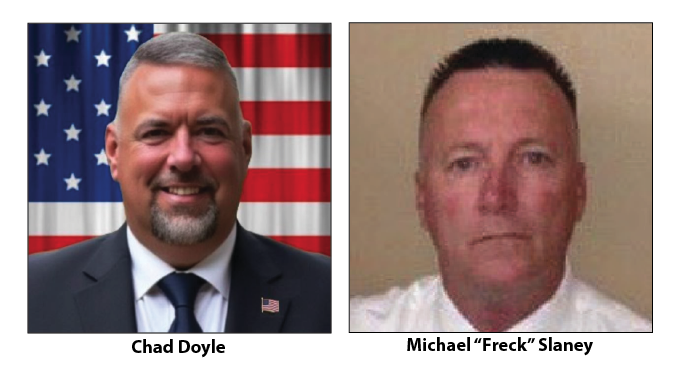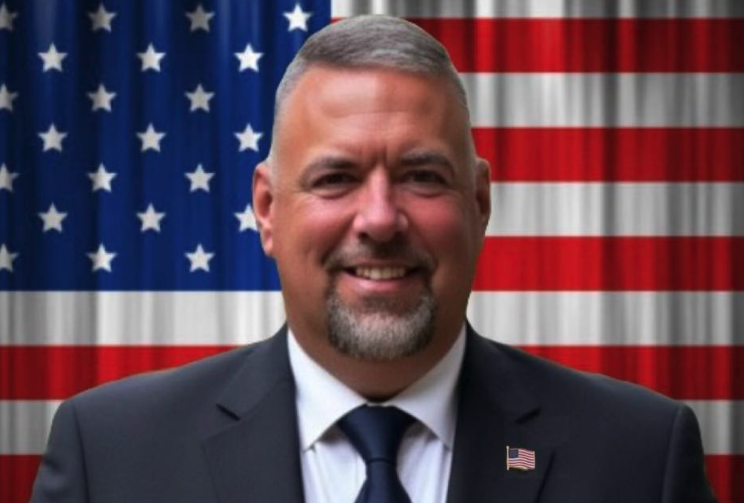At the waterhole
Published 5:58 pm Friday, August 11, 2017
Where wild animals reign supreme
Dr. Joe Richardson/ Special to American Press
In the darkness a lioness and her two cubs approached the Okaukuejo waterhole. But the black rhino and her little one (relatively speaking) would have none of this. The lioness and her babes backed off.
Trending
While I was watching this, huddled in a down jacket, the full moon was turning crimson and being swallowed by the dark shadow of the sun. But the five black rhinos didn’t look up to see the lunar eclipse. They were drinking from the waterhole, supremely confident that they did indeed rule the world. Lion hear me roar? Not while the rhinos were in town.
So — where am I? First hint — I’m in Africa. Second hint — “Etosha” means “huge, white area” in the Ovambo language. But you knew that. Yes, I’m in the Etosha National Park, Namibia. This huge park is almost the size of West Virginia and has been a game preserve and park since the German colonial government declared it so in 1909.
It is full of animals, and they are wild. Because of the fence around the park they don’t migrate to other countries, but they range the 22,000+ square miles at will. You don’t pet anything here. I was behind a fence at my lodge’s private waterhole watching these rhinos and lions, and glad of it!
This bush and savannah land in northern Namibia may seem to be an unlikely place for the incredible variety and quantity of African wildlife that reside here. It is a giant shallow “pan,” which is a very shallow lake during the rainy season and contracts down to a glaring bright white salt flat during the dry season. A giant glacier covered this area when the present day Namibia was positioned at the South Pole as part of the ancient super continent of Gondwanaland. And when the continent drifted north it melted and left the depression at Etosha from its enormous weight—the Ethosha Pan.
But the real reason animals are here is water. Specifically, waterholes. Etosha has a large number and variety of waterholes — natural, manmade, large, small, rocky, and grassy. And all are a haven for wildlife.
At a little over 22,000 square miles, Etosha National Park in the South African country of Namibia is roughly the size of West Virginia.
Yes, old movie fans. This is the place you (i.e. “bwana”) would have headed into the African bush with your native porters, your pith helmet, your gin and tonic, your Holland and Holland express.
But times have changed. We have bug spray now. No guns are allowed anymore. Cameras good, guns bad. And we have wheels.
You can drive to all the waterholes in your own twowheel drive car on gravel roads. Or you can be driven around in special safari vehicles with guides who are really great at finding herds of animals.
In fact, you must be in a vehicle — you aren’t allowed to get out of your car because these animals and snakes are wild. There could easily be a lioness hiding in the grass when you open your car door. An elephant could charge from the trees. So no hiking here.
Lions, elephants, black rhinos, springbok, giraffe, zebra, blue wildebeest (gnu), oryx (gemsbok), kudu, impala, red hartebeest, warthog, ostrich and jackal are all relatively easy to see. There are so many giraffes that by the second day you don’t even stop to gawk at them anymore. And you do have to brake for herds of antelope crossing the road. Animals have the right of way and they know it.
The leopard, eland and sable are much more of a challenge to find, but they are there, somewhere, hiding just out of sight. You can feel them.
And you can spend the nights at luxury lodges. There are three resorts within the park boundaries — Okaukuejo, Halili, and Namutoni. Okaukuejo and Namutoni were originally military outposts during German colonial times. Halili is a new resort built in 1967. Okaukuejo and Halili have their own waterholes which are lit at night. Accommodations within the park are operated by Namibian Wildlife Resorts (NWR) and rooms range from fairly luxurious chalets at the waterhole at Okaukuejo to campsites at all sites.
All the resorts are fenced in and the gates close at sundown — and you really really don’t want to get caught outside. There are also a number of lodges and camps just outside the park’s boundaries.
Lodges in and out of the park offer game drives in a variety of vehicles. The open vehicles give the best views but are very cold in the morning and evening during the summer months.
Just drive to a waterhole and wait for the wildlife to come to you. Have an easy African safari you’ll never forget.
Zebras are one of the few animals who actually go into the water. The others drink from the edge, but the zebra plunge right in. (Mary Richardson/Special to the American Press)
Baby elephants and mothers travel together, and the males just come for conjugal visits. This baby elephant appears to be comfortable between two behemoths. (Joe Richardson/Special to the American Press).
The animals gather on the Etosha Pan- a huge shallow lake that evaporates to white salt during the dry season, which is most of the year. Animals seem to coexist in layers- springbok in the foreground, then a layer of zebra, then the kudus, then ostriches out on the salt plain, all punctuated by a couple of giraffes, wildebeest and oryx. (Mary Richardson/Special to the American Press).





